Growing gerberas from seeds at home
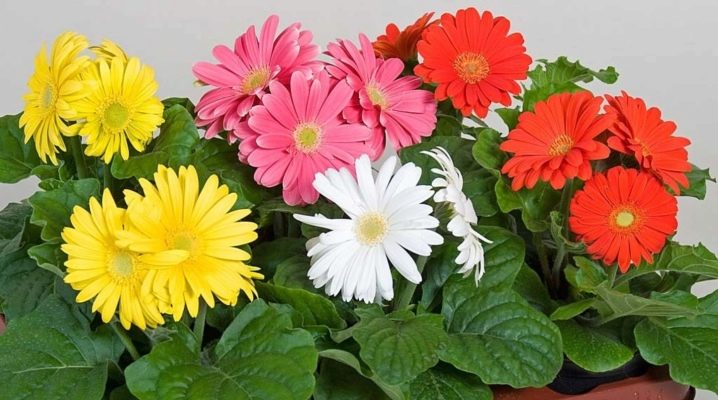
Gerbera is a very beautiful plant that pleases its owners with large bright flowers. It looks great in bouquets, but it will look just as good in a pot, especially if you choose the right variety. Growing a Jameson gerbera at home is a simple matter, the main thing is to follow some rules.
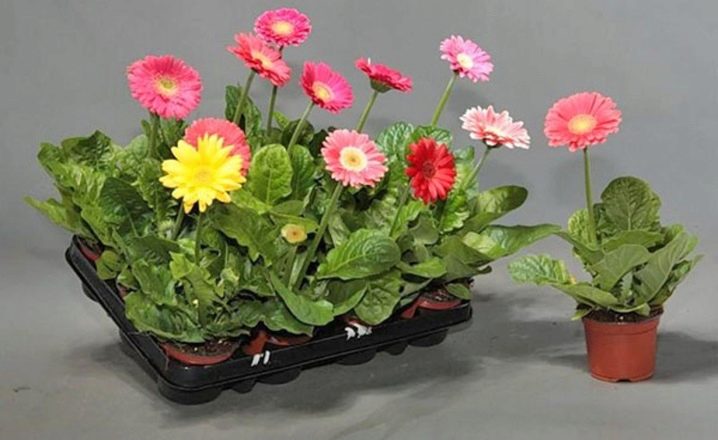
Preparation for growing
No particularly complex manipulations are needed to prepare for sowing and growing gerbera daisies. This plant is not very demanding, so it is quite easy to provide all the necessary conditions.
We select seeds
The first step is to select quality seed material. If there is already a gerbera in the house, you can carry out pollination (this plant is not pollinated on its own), and then collect the seeds. You can do this when the middle becomes fluffy. The seeds look like small oblong seeds with a brush at the tip. If the cultivation of gerbera will be done for the first time, you will have to go to the seed store.
The main thing is to pay attention to when the seeds were harvested, because they remain viable only for six months.
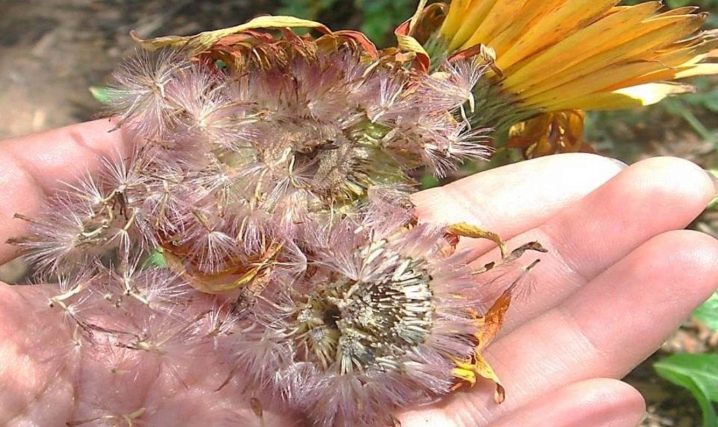
Preparing the soil
Gerbera soil should be light, porous. You can buy it at the store, or you can prepare the mixture yourself. For this, it is taken leaf humus, peat and sand in a ratio of 2: 2: 1. You can add pine bark.
One of the main requirements is soil acidity. It should be low. A neutral reaction will work too, but in acidic soil the plant will die.
In addition, the homemade mixture must be disinfected before planting. This is done using a hot solution of manganese, which is watered the soil at least 2 hours before planting.
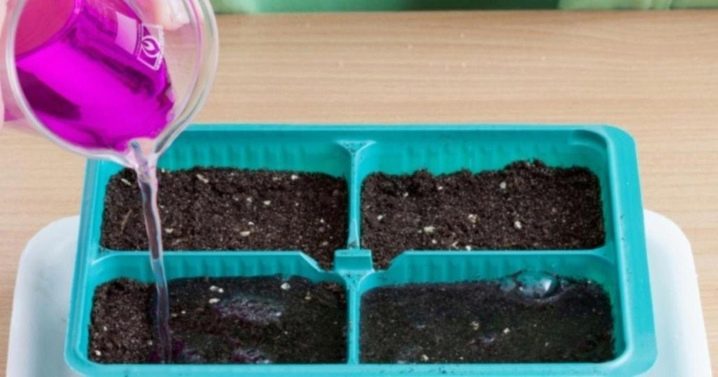
We provide conditions
The seedling pot is placed in a shaded place until shoots appear. Then the seedlings need to provide a sufficient level of illumination and heat, but exposure to direct sunlight should be avoided.

Landing
Sowing can be done from autumn to spring. However, planting in the spring is preferable - it meets the natural biological rhythms of the plants. If in the fall all living things in nature are preparing for winter, for hibernation, then in spring, on the contrary, life processes are accelerated, and the "instincts" of the seeds "speak" that it is time to grow.
Landing is carried out according to certain rules. Gerbera seeds are spread on the surface of the prepared soil and sprinkled a little. You can put glass on top of the seedlings or cover it with a film - this will accelerate germination.
However, when using glass or film, remember to remove them daily in order to provide oxygen access.
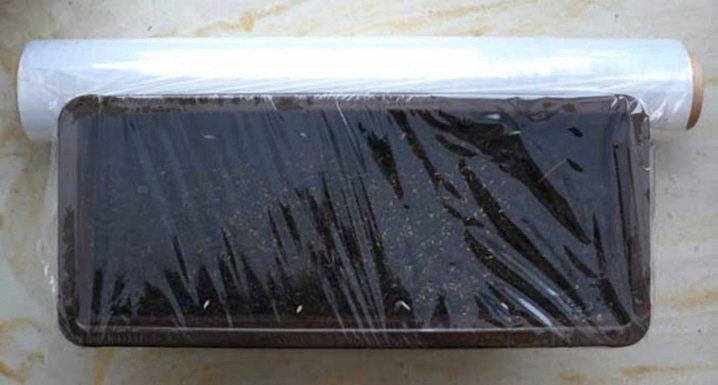
After the shoots appear (usually this happens a week and a half after planting), the seedlings are opened completely.
Gerberas can be planted in small containers or peat pots. In the latter case, the subsequent transplant will be faster and safer for the plants. They contain seedlings in a darkened room, maintaining a temperature regime of +18.20 degrees Celsius.
Compliance with these simple rules will allow you to correctly approach the cultivation of gerbera, and will ensure the rapid germination of seeds.
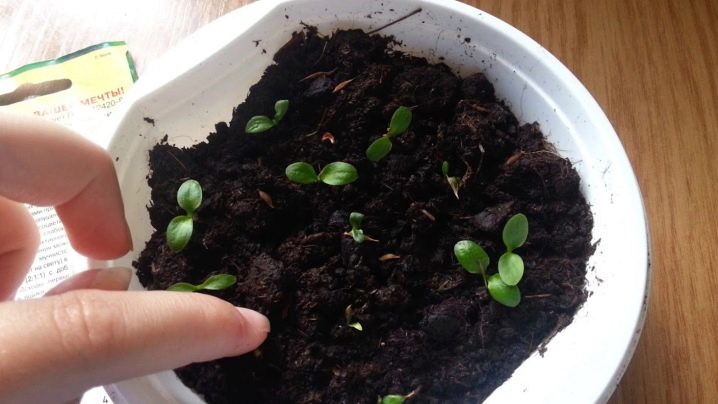
Watch a video on the topic.
How to grow?
It is quite simple to grow a gerbera from seeds at home, it is enough to create the necessary conditions for it, observe the temperature, climatic regime, and do not forget to feed. This is a rather unpretentious plant, it does not require complex care, it sprouts easily, and blooms beautifully. Even a novice florist can handle it.
Top dressing
You need to feed the gerbera at a time when it is gaining green mass, and during the flowering period. No fertilization is required during the dormant period.
The main thing is to remember that this plant does not tolerate humus and similar organic compounds.
Best suited for feeding gerberas mineral compounds. In different periods of a flower's life, these must be different substances.
So, when gaining green mass, the plant needs complex fertilizer, which contains nitrogen. This element contributes to the correct formation of leaves, the full development of the plant.
When the gerbera begins to bloom, you need to change the type of feeding. During this period, it is better to apply potash fertilizers. Potassium accelerates metabolic processes in cells, helps the plant to endure drought more easily, accelerates photosynthesis, the plant adapts more easily to low temperatures.
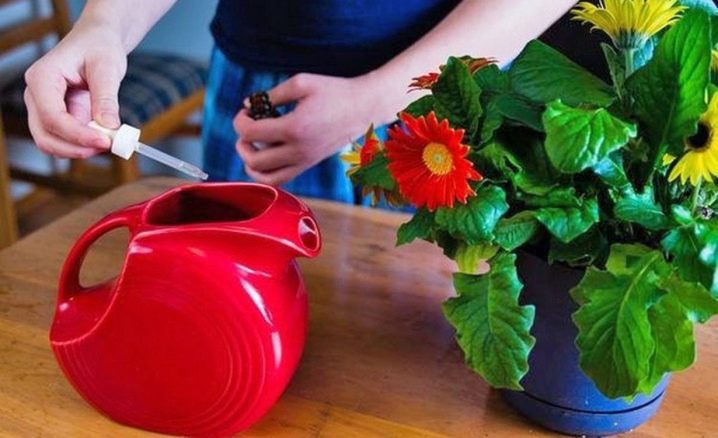
Watering
Gerbera does not like abundant watering, but it also does not tolerate dry soil well. It is necessary to observe the "golden mean" and ensure that the soil is always moderately moist.
When watering, in no case should water get on the plant.
The best option would be a pallet. Then the plant itself will be able to take enough water when it needs it. It is also necessary to monitor the temperature of the water. It should be roomy, not very cold and not hot.
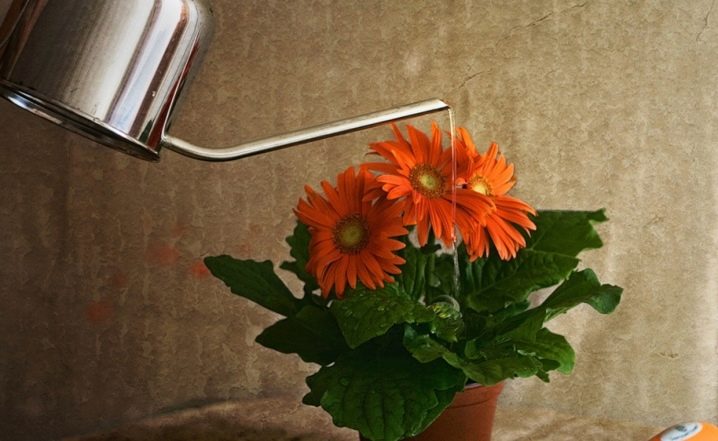
Climatic conditions
For gerbera, temperature and humidity levels are important. She feels comfortable at a temperature of +18.22 degrees, at higher or lower values, it may start to hurt, wither, and may stop blooming. In the cold season, when the plant is dormant, it needs to provide a temperature from +16 to +14 degrees, it is possible and slightly lower, but not less than +12.
As for humidity, there are also some nuances that must be observed. First of all, you need to remember that you should not spray gerbera from a spray bottle, it is better to spray water near the plant, without getting on the leaves. Another option is to place a container filled with water near the plant pot. The moisture will gradually evaporate and the flower will receive the moisture it needs.
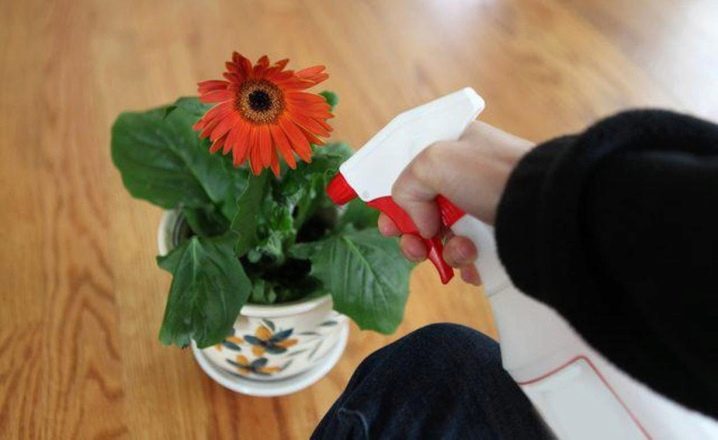
Diseases and pests
If all the necessary conditions are met, gerbera is not prone to disease. But in case of violation of the temperature regime, improper watering or spraying, the plant may begin to rot, or powdery mildew will appear. It is easy to understand that something is wrong with the flower - its leaves will turn yellow or become covered with spots.
Powdery mildew is a white patch on the leaves that you can simply wipe off with your bare hands. If specks are visible on dying leaves, they are removed.
A remedy such as "Fitosporin" - they are sprayed with a plant.
It is better to choose a liquid or pasty product to make it easier to dispense.
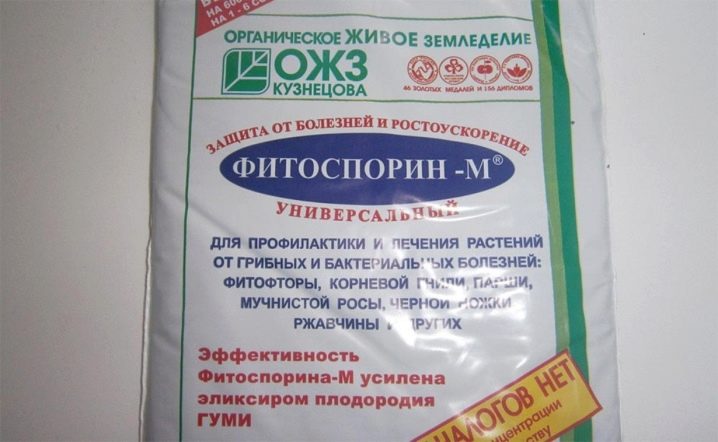
Gerbera pests include aphids, whiteflies, scale insects and mites. The methods of dealing with them are usual - you need to disinfect the soil, carefully examine the gerbera, remove unhealthy or damaged parts in time, follow the rules of care.
Aphids can be fought with anabasine sulfate, nicotine sulfate, or the like.
To get rid of a spider mite, you need to wipe the leaves of the plant with soapy water (but then it must be washed off) or with an insecticide. After a week, repeat the treatment.
Whitefly is afraid of drugs that contain permethrin. The plant is sprayed with these compounds every 3 days until the pests disappear.
And you also need to know how and when to transplant a gerbera. Throughout the life of the plant, this should be done no more than 2-3 times.... Each next container should be a couple of centimeters larger in diameter than the previous one, so that you can freely place the roots and pour fresh soil around them.
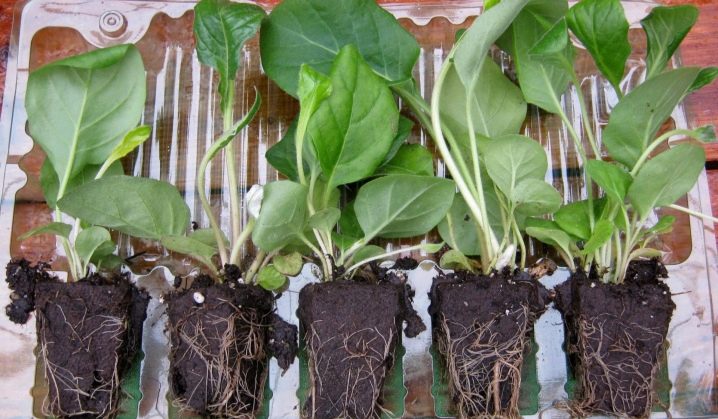
Features of the growth of different varieties
Gerbera Jameson is the most popular species for home cultivation, especially its dwarf varieties.
An adult gerbera should be placed on windows that face west or east. If the plant is placed on the southern windowsills, it is imperative to close them at noon.
When choosing a mixture, you need to pay attention to the date of collection of seeds - their life is limited, and after six months they will no longer sprout. In addition, it is important to know that there are male and female varieties of gerberas. To keep the variety clean, you need to make sure that both plants are of the same species.
Gerbera seeds are most often sold in mixtures: "Rays", "Chardonnay" and so on, so it is very difficult to guess what color and what kind of plant will be. But in any case, indoor gerbera is an unpretentious, undemanding plant, it germinates quite quickly and easily, the seeds do not need any additional preparation for sowing. There are no special differences in the cultivation of different varieties of indoor gerbera.
It is enough to follow the basic rules of care: temperature regime, volume and frequency of watering, moisture level, soil composition.
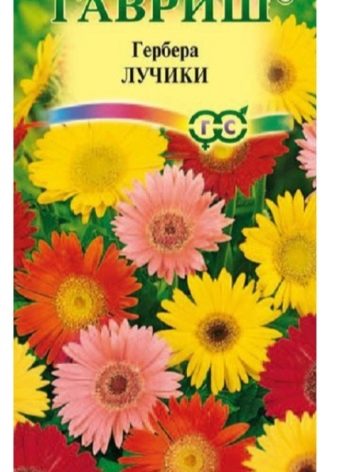
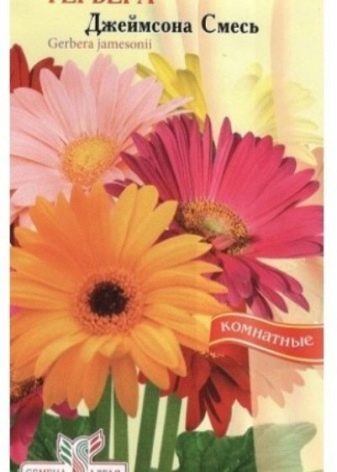
Due to its unpretentiousness, gerbera has gained popularity even among novice florists. But this is not the only reason. Beautiful, bright flowers that appear at the end of August and delight owners until the end of September immediately attract attention and dispose the hearts of people to this plant.
The correct temperature regime, moderate and timely watering, fertilization on time, the required level of humidity and illumination - these are all the simple requirements that must be observed in order to grow a gerbera. This beautiful flower, loved by many, looks great not only in a bouquet, but also in a pot.
It is best to choose clay products - in such a pot, the roots of the plant will breathe.
At the bottom, it is imperative to pour expanded clay as drainage. If the container is plastic, it must be doused with boiling water before placing the flower there.
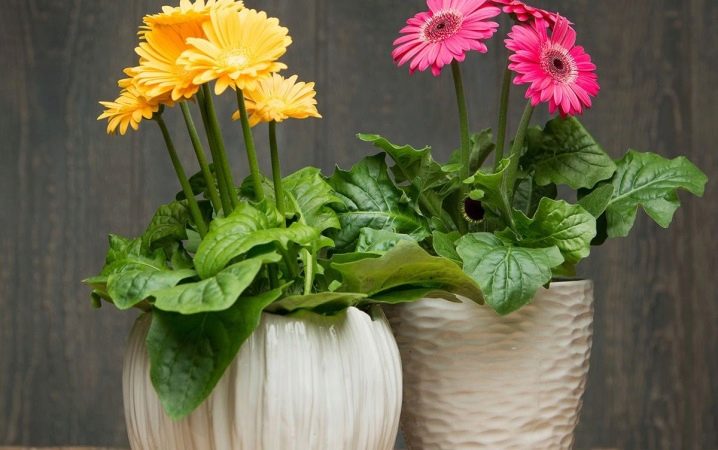

































































































Thanks for the useful information.
Thanks for the information.
The comment was sent successfully.